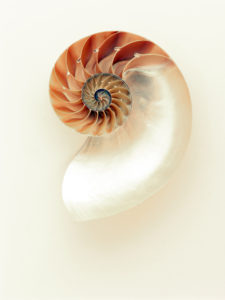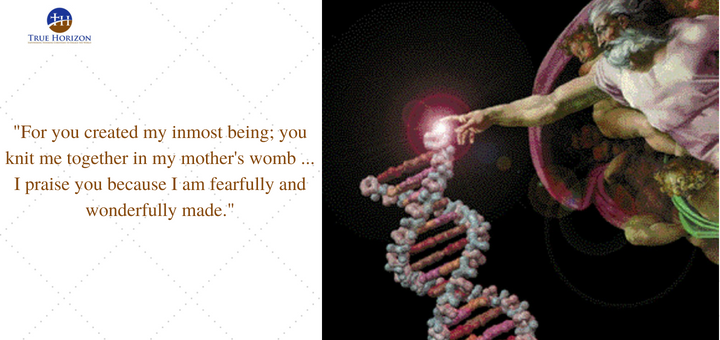We Live In A Beautiful World
In classical thinking, saying that something is beautiful is not a matter of subjective opinion. It’s a way to identify an objective feature of the world. We don’t construct beauty; we discover it. And we try to mimic it. A lot of ink has gone to paper discussing this view when it comes to truth and goodness. In fact, Christians make the case that truth and goodness are grounded in the character of God. But there’s more to the story. The ancient philosophers who talked about those also included a third feature with them. They called it beauty. For some reason, we don’t talk the same way about beauty anymore. But don’t be confused. Beauty is in the same category. Classical thinkers have always linked truth, goodness, and beauty together as interdependent, objective features of the world.
The Ancient Idea of Beauty
The ancient Greek philosophers saw beauty in objects that displayed symmetry, order, balance, unity, and proportion. In fact, the Greek word we translated into “beauty” was hora. This is the root from which we have derived the word hour. That’s because beauty includes a sense of timing. It takes into account what we know about the purpose for which the object exists.
Think of a flower. The ancients saw beauty not only in the symmetry of the flower’s petals or the vivid colors it displayed. They also recognized that these properties became most prominent when the flower reached its prime – when it bloomed. In the same way, fruit was most beautiful when it ripened. A mature woman was beautiful – and a young girl was beautiful – each in a way that fulfilled their purpose for that stage of their being. There was no beauty in an older woman trying to look younger than she really was. Nor was it beautiful when a young woman tried to look older than she should.
In other words, the characteristics that made something beautiful were built into the object one was observing. Beauty was dependent on an object’s nature and purpose.
It had nothing to do with an observer’s opinion of it.
Recognizing Beauty

Scientists uncover evidence of this kind of beauty everywhere in nature. We see it in “eerie proportional coincidences” like the “Golden Number,” Phi (1.618), and the “Golden Triangle” derived from it. The ratio shows up in commonly-accepted shapes of rectangles used to frame pictures and in the triangle-faced sides of the Great Pyramids. Humans design things using these proportions because they make them look pleasing to the eye. The mathematician Fibonacci derived his infamous Fibonacci Sequence from it.
But this ratio also shows up in nature all on its own. The radius of a spiraling Chambered Nautilus shell expands in relation to it. The similarly appealing geometry of flower petals — and the radiating pattern of combs in a honey bee hive — grow by the same proportions. These kinds of forms and patterns appear so often in nature, we use them to our benefit … and for our pleasure.
Leveraging Beauty
In their book, A Meaningful World, Benjamin Wiker and Jonathan Witt show how “the arts and sciences reveal the genius of nature.” One of the examples they use to demonstrate this is the Periodic Table of Elements. That table we all learned about in junior high school is a snapshot of nature’s beauty. The chemists who developed it did so by finding “elegant mathematical relationships between atomic weights of elements and the properties of elements.” Doing so drove them to predict the existence of elements we didn’t even know to exist. It was beauty that led them to fill the table in.
Resonant Beauty
The same type of patterns and relationships that led to the Periodic Table bring meaning and transcendence to our lives. Consider the relationship between mathematics and music, for instance. We can describe musical harmony using mathematical equations. But it works because it resonates with our souls.
The philosopher Leibniz described music as “the pleasure the human mind experiences from counting without being aware that it is counting.” But music has a way of moving more than just our feet to the beat of a song. It stirs our emotions. Tradition has it that when Handel was composing his epic Messiah, one of his servants walked in on him while he was writing the famous “Hallelujah Chorus.” The composer was weeping.
Handel is said to have remarked, “I do believe I’ve seen the gates of Heaven.”
Beauty Inspires Us

The God-glorifying nature of music is just one of the many ways beauty is manifested in our world. The symmetry, form, and vivid colors of a butterfly enchant us. We marvel at the complexion and immensity of a rainbow, or at the power and majesty of a grand landscape.
These things elicit involuntary reactions in us when we experience them. They can take our breath away. They can make our feet start tapping. They can bring us to tears. They are the kinds of things that add richness and depth to our lives.
Reproducing Beauty
We discover beauty in our world and then try to reproduce it in the things we create. And we long to create things because we are made in the image of the ultimate Creator. Part of what it means to be “made in the image of God” is that we attempt to mimic Him. And when we’re successful, the results are stunning.
Today, we are beginning to use the digital capabilities we have discovered in biology to revolutionize our computers. We design airplanes based on the features we see in birds. We write literature and poetry that elevates our aspirations and invokes the divine. We paint landscapes to reflect the majesty of the world we live in.
We build cathedrals that point to the heavens.
And that’s the point.
Beauty Transcends Us
This all makes sense inside the Christian worldview because beauty is just another form of truth. And like truth itself, we don’t make it up. It draws us in. The character of God is the common reality that explains the trinity of truth, goodness, and beauty. They are the essence, character, and reflection of Him.
Beauty is not subjective. It’s part of the fabric of the universe. It inspires us to think outside ourselves.
This post also appeared on the CrossExamined.org blog






